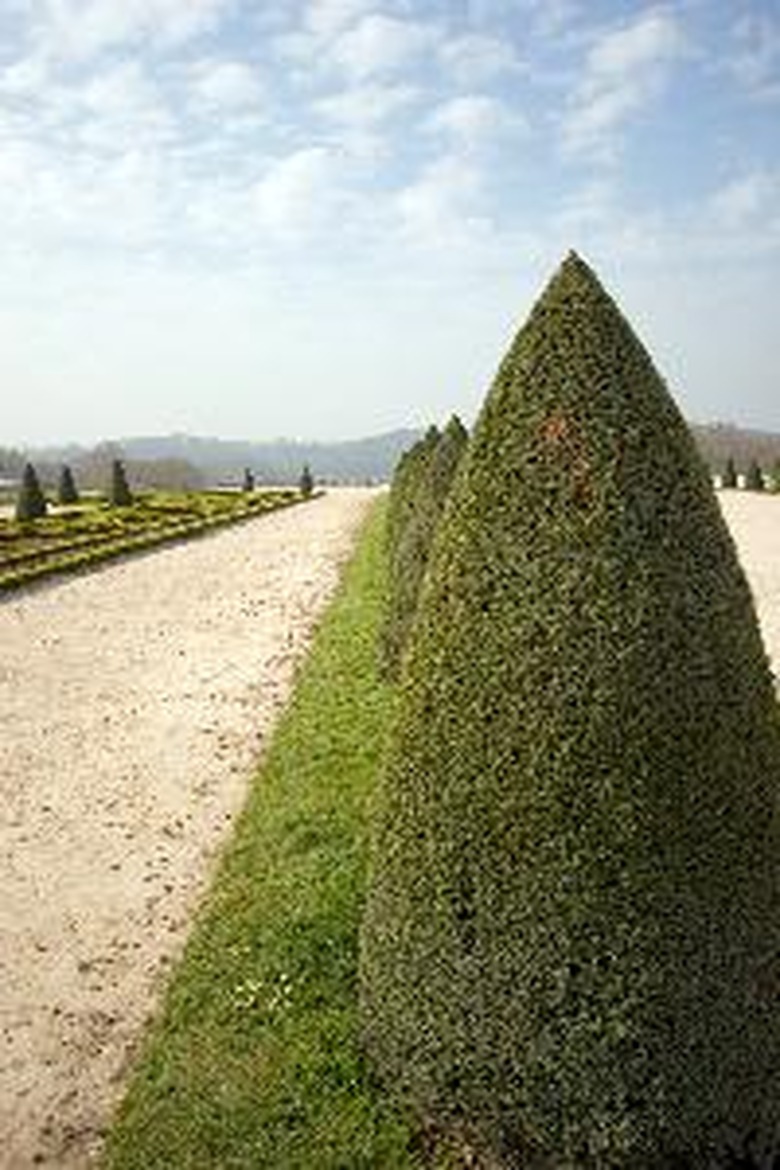Dying Hedges
Hedges provide privacy, protect an area from wind damage and offer a way to cover unappealing parts of a landscape. Dying hedges are caused by a variety of problems, including improper growing conditions, insects and diseases. A combination of preventive and corrective measures keep hedges in optimal condition. Dying hedges may respond to the right care and maintenance, depending on the original cause of the condition.
Growing Conditions
Hedges require a wide variety of growing conditions, depending on the species. For instance, hollies prefer sunny sites but tolerate shade, while bay cedar and bougainvillea require full sun. Proper growing conditions ensure optimal growth and minimal plant stress, reducing the chance of insect or disease conditions in your hedges. Evaluate the growing conditions of dying hedges and correct as needed. Other common environmental problems include too little or excessive water, lack of nutrients, incorrect soil pH, or poorly draining soil. Taking a soil sample to your local county extension office provides detailed information regarding possible nutrient deficiencies as well.
Importance of Pruning
Hedges need regular pruning, on at least an annual basis, for proper growth. This encourages strong new growth while shaping your hedge to suit your needs. Pruning with a wide base ensures adequate sun and air circulation to the entire plant, according to Colorado State University Extension. Inadequate light or air may lead to dying hedges, as much of the plant receives too little light and poor air circulation increases the risk of diseases.
Insect Control
Insects that commonly attack hedges include scales, mites, weevils and mealybugs. Insects infestations occur more often and affect hedges more severely if the plant is already under stress. Keep your hedges growing in a disease-free, optimal environment to reduce the risk of insect problems. If you see unknown insects on your dying hedges, take a sample to your local county extension office for identification. This ensures proper treatment, which may consist of insecticidal soap or oil, or natural treatments such as hosing down hedges with a strong stream of water or pruning infested areas.
Correcting and Preventing Diseases
Good maintenance techniques encourage optimal health and plant vigor, lessening the chance of disease. Mulching improves moisture retention, preventing plant stress due to drought. Mulch also controls weeds which provide a potential habitat for disease-carrying insects. Fertilizing prevents nutritional deficiencies and diseases. Topdressing the soil with amendments also improves soil structure, leading to better moisture and nutrient availability to the roots, and reducing the risk of disease caused by inadequately draining soil. Choosing plants with good resistance to diseases common in your area goes a long way toward ensuring success with your hedges.
